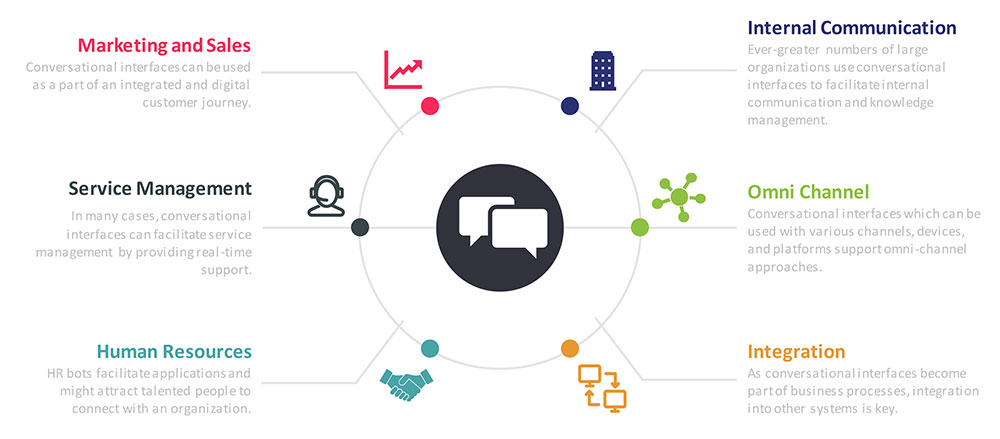AI-based conversational interfaces developed plenty of hype for use cases within marketing, sales, and service management. Various types of solutions are on the market, offered by both small start-ups and large, international, established enterprises.
More than a hype
Conversational interfaces experienced hype in 2016, followed by some disillusionment in the next years, as many solutions were technical gadgets rather than delivering real value. This is about to change, as many solutions are more mature now - and implemented as a part of digitalization projects within marketing, sales, or service management. It is expected that the market for conversational AI building platform will grow significantly within the next several years.
Customer Centricity
Marketers and service management experts see conversational interfaces as a key topic when it comes to customer-centric approaches. Furthermore, conversational interfaces are becoming more popular among organizations for internal communication and service management.
Digitalization will change the way people communicate with organizations and the way organizations set up sales and service processes.
Connecting with data pools will be crucial in order to enable communications that customers expect in future—personalized, individual information in real time is crucial in this case to meet user experience expectations.
Conversational interfaces have been developed from technical gadgets to integrated parts of customer journeys and/or business processes.
Various use cases
In a heterogenous market there exist various “flavors” of conversational AI building platforms. Capabilities differ depending on the focus of each solution. The KuppingerCole Market Compass considers various use cases:
-
Marketing/sales
Probably one of the most popular use cases when it comes to conversational interfaces is marketing and sales, in order to answer product- or service-related questions from consumers/customers. -
Customer service
Another popular use case—in many cases closely connected to marketing/sales-focused use cases—is customer service. Conversational interfaces might help to facilitate customer service, e.g., by providing real-time answers. This can be combined with human-based service centers or replace them. -
Human resource marketing
More and more organizations use conversational interfaces to empower human resource marketing, e.g., to answer questions related to job vacancies or directly handle the application process. -
Internal communication
Conversational interfaces can be used for internal purposes as well, e.g., in addition to internal wikis or intranet pages. This might help in finding the right document template or contact persons based on conversational AI.

Which solution is fit for purpose?
Some vendors offer solutions with a narrow focus on conversational interfaces and offer connectors to integrate with other systems. Others offer comprehensive suites covering other aspects, such as data management, marketing automation, and customer relationship management. An organization’s individual situation will determine which approach fits better. There is no right or wrong. In some cases, there already exists a best-of-breed approach, which means that it makes sense to integrate a solution with a narrow focus on conversational interfaces into an existing systems landscape. In other cases, the right way might be to implement conversational AI building platforms within a project with a larger scope, e.g., including more marketing automation or service management components. In every case, it is crucial to consider a clear business case, including change management procedures.
Focus of this Market Compass
This Market Compass covers solutions that provide conversational AI building platforms with a focus on chatbot solutions. Furthermore, the systems considered in this report have machine learning (ML) capabilities in order to continuously improve conversational capabilities. In addition, this report is focused on solutions that enable integration into existing consumer/customer touchpoints, such as websites, portals, e-commerce, and CRM solutions.


















































